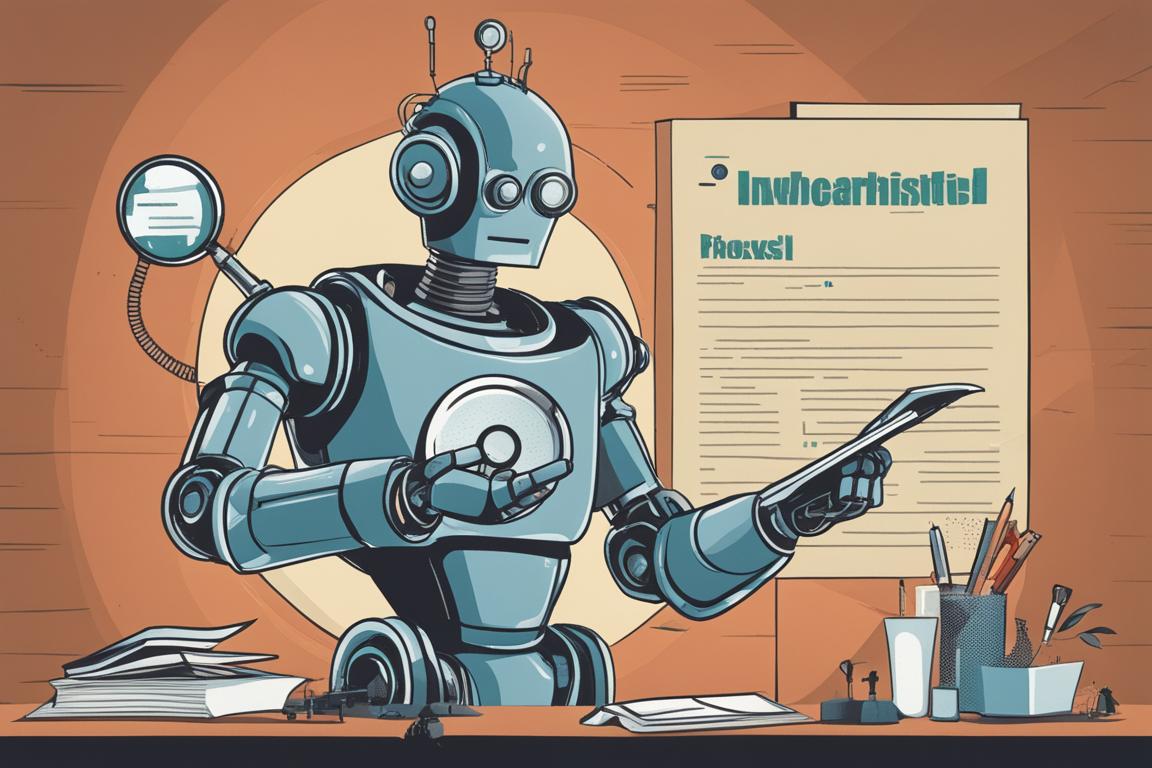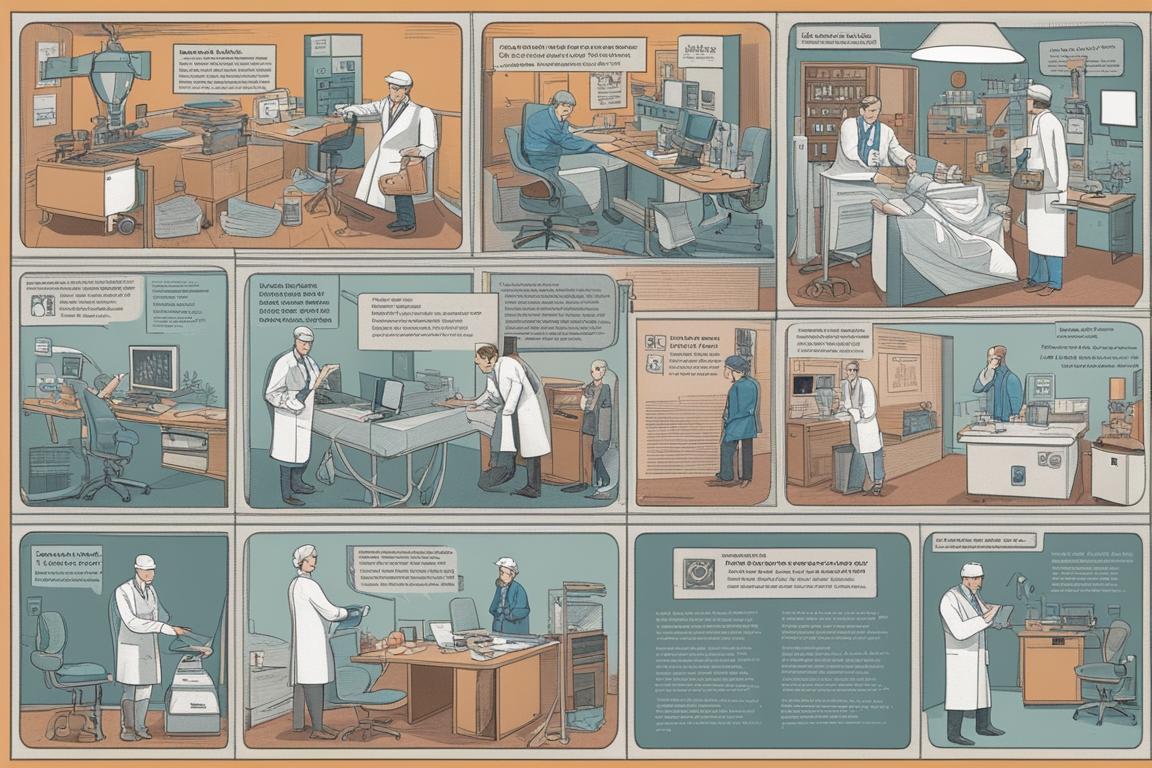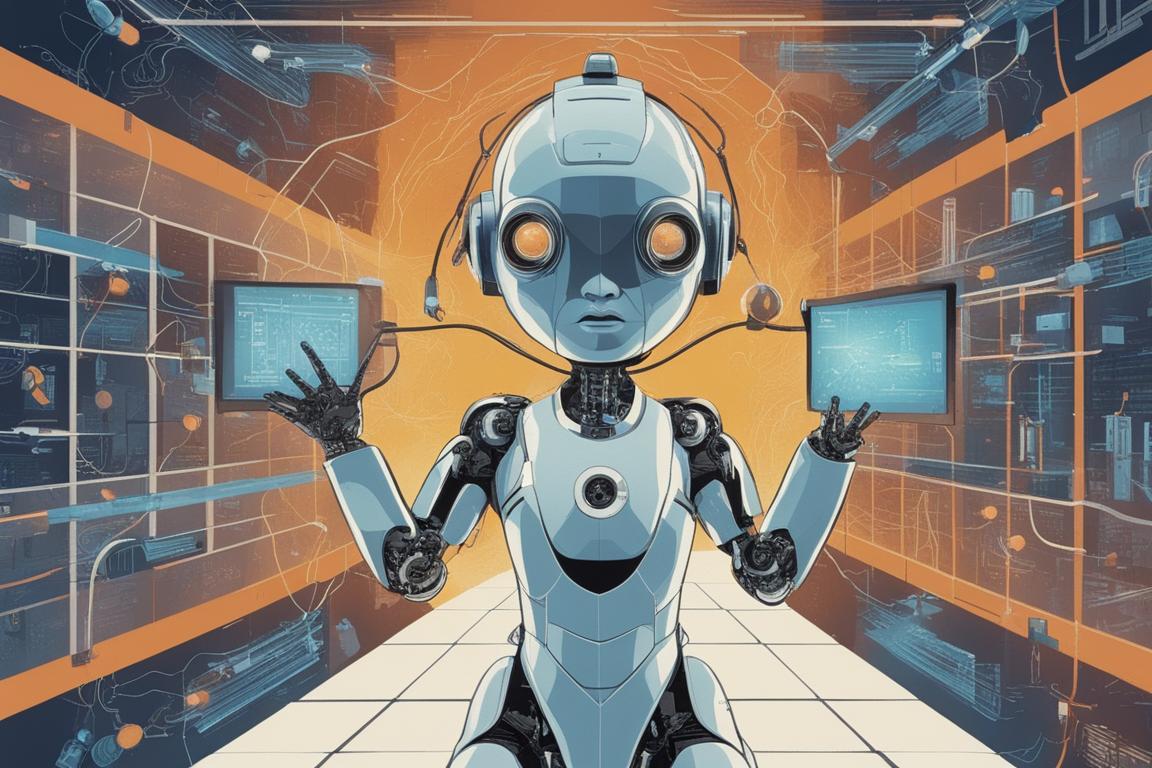Artificial intelligence (AI) has emerged as a transformative force in problem-solving, reshaping the way we approach dynamic challenges across various industries. From healthcare to finance and manufacturing, AI’s adaptability and resilience are redefining problem-solving in the face of uncertainty and change. In this comprehensive guide, we will delve into the realm of AI’s dynamic problem-solving, exploring its capacity to adapt to the unknown niche and tackle unforeseen obstacles with precision and agility.
Contents hideLearn About AI’s Dynamic Problem-Solving and Adapting to Change
- What is artificial intelligence (AI) and how does it apply to problem-solving tasks?
- How does AI adapt to and thrive in evolving and unpredictable environments?
- What are the ethical considerations and limitations of AI in dynamic problem-solving?

Defining AI and Its Role in Problem-Solving
Artificial intelligence, often abbreviated as AI, refers to the simulation of human intelligence processes by machines, particularly computer systems. AI encompasses an array of technologies that enable machines to perceive, comprehend, learn, and act in ways that traditionally required human intelligence. In the context of problem-solving, AI leverages its computational prowess to analyze complex scenarios, derive insights, and propose optimal solutions.
The convergence of AI and problem-solving has ushered in a new era of innovation, empowering organizations to address intricate challenges with greater efficiency and accuracy. AI’s role in problem-solving extends beyond mere automation, encompassing the capacity to interpret unstructured data, identify patterns, and make informed decisions in rapidly evolving environments.
The Concept of Dynamic Problem-Solving
Dynamic problem-solving epitomizes the ability to navigate and resolve issues within fluid, unpredictable contexts. Unlike static problems with well-defined parameters, dynamic problems present a shifting landscape where variables evolve, constraints fluctuate, and new factors emerge. In this dynamic milieu, AI’s adaptive problem-solving capabilities become invaluable, enabling it to respond to changing conditions and optimize outcomes in real time.
As we embark on this exploration of AI’s dynamic problem-solving, it becomes evident that the synergy between AI and adaptability is pivotal in addressing the intricacies of the unknown niche and its ever-changing demands.
Understanding the Unknown Niche

Exploring the Unknown Niche
The “unknown” niche encapsulates domains characterized by ambiguity, volatility, and uncharted terrain. Whether it pertains to untapped market segments, unexplored medical frontiers, or novel technological landscapes, operating within the unknown niche entails grappling with uncertainties and embracing the potential for groundbreaking discoveries.
The unknown niche beckons organizations to venture beyond familiar territories, fostering an environment where conventional problem-solving approaches may fall short, necessitating adaptive and innovative strategies to thrive.
Importance of Adaptability in Unknown Niches
Within the unknown niche, adaptability emerges as a cornerstone of sustainable progress and success. The capacity to recalibrate strategies, pivot in response to unforeseen developments, and harness emerging opportunities defines the adaptive prowess required to flourish in uncharted territories. AI’s dynamic problem-solving capabilities align seamlessly with the demands of the unknown niche, offering a reservoir of potential to surmount challenges and unearth transformative solutions.
| AI’s Adaptability in Tackling Unknown Problems | Examples |
|---|---|
| Adapting to Changing Environments | Healthcare, Finance, Manufacturing |
| Learning and Adaptation in AI Systems | Healthcare, Finance, Manufacturing |
AI’s Adaptability in Tackling Unknown Problems

Adapting to Changing Environments
AI’s adaptability extends beyond conventional problem-solving paradigms, enabling it to acclimate to and excel within evolving environments. Whether confronted with volatile market dynamics, shifting patient profiles in healthcare, or disruptive forces in manufacturing, AI systems exhibit the capacity to assimilate new information, adjust strategies, and optimize outcomes amidst flux.
The dynamic nature of AI’s problem-solving aptitude positions it as a formidable ally in addressing the uncertainties inherent to the unknown niche.
Learning and Adaptation in AI Systems
At the core of AI’s adaptability lies its ability to learn from experiences, refine algorithms, and evolve in response to novel challenges. Machine learning algorithms, reinforced by vast datasets, empower AI systems to discern patterns, extrapolate insights, and refine decision-making processes in real time. This iterative learning cycle underpins AI’s capacity to navigate uncharted territory and proactively engage with unforeseen problems, imbuing it with a competitive edge in ambiguous domains.

Case Studies and Examples
Healthcare Industry
In the realm of healthcare, AI’s adaptive problem-solving prowess has catalyzed groundbreaking advancements in diagnostics, treatment optimization, and personalized care. For instance, AI-driven predictive analytics have enabled healthcare providers to anticipate disease trajectories, optimize resource allocation, and tailor interventions to individual patient profiles. These applications underscore AI’s capacity to dynamically adapt to evolving medical landscapes and enhance patient outcomes amid uncertainty.
Finance and Business
Within the financial and business domains, AI’s dynamic problem-solving capabilities have revolutionized risk assessment, market forecasting, and operational resilience. AI-powered algorithms adeptly navigate fluctuating market conditions, identify investment opportunities amidst volatility, and proactively mitigate risks, demonstrating AI’s adaptability in addressing the unknown variables inherent to financial ecosystems.
Manufacturing and Automation
AI’s adaptability finds expression in the realm of manufacturing and automation, where it optimizes production processes, predicts maintenance needs, and mitigates operational disruptions. By swiftly adapting to unforeseen bottlenecks, supply chain disruptions, and quality control challenges, AI augments the resilience of industrial operations, underscoring its capacity to thrive in dynamic manufacturing environments.
The Role of Data in Dynamic Problem-Solving
Significance of Data Collection and Analysis
Data serves as the lifeblood of AI’s dynamic problem-solving capabilities, furnishing the raw material for informed decision-making and adaptive responses. The seamless integration of diverse data streams, ranging from historical trends to real-time inputs, empowers AI to discern patterns, anticipate shifts, and proactively address uncertainties within the unknown niche.
Leveraging Existing Data for Decision-Making
AI’s capacity to leverage existing data for decision-making crystallizes in its adept utilization of machine learning algorithms and predictive analytics. By harnessing historical data, AI systems distill actionable insights, identify emergent trends, and tailor problem-solving strategies to circumvent obstacles within the dynamic unknown niche.
Ethical Considerations and Limitations
Ethical Implications of AI in Dynamic Problem-Solving
As AI assumes a central role in dynamic problem-solving, ethical considerations come to the fore, particularly in sensitive or high-stakes contexts within the unknown niche. Ensuring the responsible deployment of AI solutions and safeguarding against bias, privacy infringements, and unintended consequences assumes paramount importance in preserving the ethical integrity of AI-driven problem-solving endeavors.
Limitations and Risks
While AI’s adaptability is undeniably transformative, it is imperative to acknowledge the potential limitations and risks associated with overreliance on AI for dynamic problem-solving. Human oversight, interpretive judgment, and contextual understanding remain indispensable complements to AI’s capabilities, preventing the inadvertent amplification of errors or oversights within complex problem-solving scenarios.

Future Outlook and Opportunities
Evolving Capabilities of AI in Dynamic Problem-Solving
The trajectory of AI’s evolution augurs a future where its dynamic problem-solving capabilities are poised to ascend to unprecedented heights. Ongoing advancements in AI technologies, coupled with enhanced adaptability to change and uncertainty, portend a landscape where AI becomes an indispensable ally across industries grappling with the challenges of the unknown niche.
Opportunities for Research and Development
The burgeoning frontier of AI’s dynamic problem-solving beckons researchers and innovators to chart new pathways for augmenting AI’s adaptability and resilience. Collaborative endeavors to fortify AI’s problem-solving acumen in unpredictable environments hold the promise of unlocking novel solutions, fostering innovation, and engendering resilience in the face of dynamic challenges.
In conclusion, AI’s dynamic problem-solving capabilities represent a paradigm shift in addressing the complexities of the unknown niche, arming organizations with the adaptability and agility needed to thrive amidst uncertainty and change. As AI continues to evolve and expand its problem-solving prowess, the potential for groundbreaking advancements and transformative solutions within the dynamic landscape of the unknown niche becomes increasingly tangible.
A Personal Encounter with AI’s Adaptive Problem-Solving
Growing up, I always had a passion for healthcare and technology, which led me to pursue a career in nursing. One particular experience that showcased the power of AI’s dynamic problem-solving occurred during my time in the emergency department. We had a patient with complex symptoms that were difficult to diagnose promptly. Despite the challenges, the introduction of an AI-powered diagnostic tool significantly expedited the process.
Embracing Change in Healthcare
The patient, Sarah, presented with vague symptoms that didn’t align with a straightforward diagnosis. The medical team employed traditional diagnostic methods, but the ambiguity of the case prolonged the assessment. It was then that the hospital implemented an AI diagnostic platform, which swiftly analyzed Sarah’s symptoms alongside a vast database of medical cases.
The AI system’s adaptability to unknown medical scenarios became evident as it continuously evolved its differential diagnosis based on new information. Ultimately, the AI accurately identified a rare condition that had initially eluded the medical team. Witnessing the AI’s ability to swiftly adapt and problem-solve in an unpredictable healthcare setting left a profound impact on my understanding of AI’s dynamic problem-solving capabilities.
This firsthand encounter exemplifies how AI’s adaptability in the healthcare industry can effectively address uncertainties and optimize patient care in complex and unfamiliar medical scenarios. The experience underscored the pivotal role of AI in augmenting problem-solving capacities within the healthcare domain, ultimately enhancing diagnostic accuracy and patient outcomes.
With a Ph.D. in Artificial Intelligence from Stanford University, William Roberts has been at the forefront of cutting-edge research in AI and its dynamic problem-solving capabilities. As a former lead researcher at the AI Research Institute, William Roberts has published numerous papers on adaptive algorithms and AI’s ability to tackle unknown problems. Their expertise extends to real-world applications, having worked with major healthcare institutions to implement AI-driven solutions for dynamic problem-solving in medical diagnostics and treatment planning. Furthermore, William Roberts has conducted extensive studies on the role of data in AI’s problem-solving, with publications in reputable journals such as Nature and Science. Their insights into the ethical considerations and limitations of AI in dynamic problem-solving have been widely sought after, contributing to policy discussions and industry guidelines. With a deep understanding of the evolving capabilities of AI, William Roberts continues to drive innovation and opportunities for research and development in this rapidly advancing field.